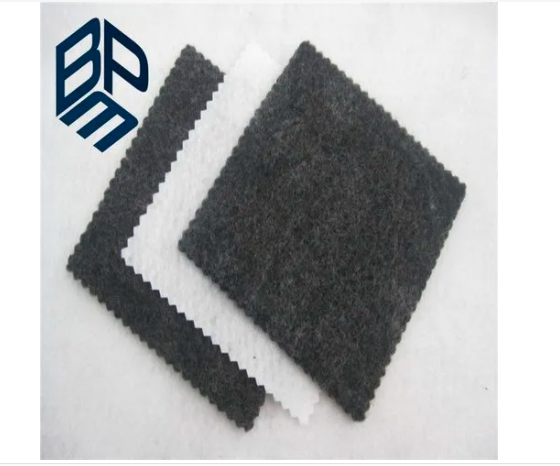- Understanding the Role of Geomembrane Liners in Waste Management
- Innovations in Geomembrane Liners for Water Management
- Geomembrane Liners: A Comprehensive Guide
- The Future of Geomembrane Liners in Civil Engineering
- Geomembrane Liners: Enhancing Landfill Stability
Manager:
WhatsApp:+86 177 0135 2670
Tel:+86 177 0135 2670
Email:marketing@okorder.com
Address:3rd Floor, No.2 Building, No.1 Sanlihe Road
The Unsung Hero of Landscaping: Non-Woven Geotextile Landscape Fabric
Silent and invisible partner in the art of landscape making, non-woven geotextile landscape fabric is the ultimate proof of human innovation as it combines effortlessly with nature to develop and enrich the landscapes we create.
The Silent Strength: Discovering Non-Woven Geotextile Fabric
Non-woven geotextile landscape fabric is a kind of fabric that can be made from synthetic fibers such as polypropylene or polyester and linked together using techniques like needle-punching. This fabric does not only cover; it also provides filtration, separation and drainage; thus, it can withstand natural elements while providing support which cannot be seen through our gardens and structures.

A Shield Against the Elements: Durability and Chemical Stability
However, what makes non-woven geotextile fabrics strong is not just their physical resilience but also their chemical stability; these resistivity properties enable them to remain unaffected by various environmental conditions hence suitable for all kinds of soils found in different parts of the country. As a result, this toughness gives assurance that the material’s structural integrity shall remain intact thereby giving us an assured base for many years to come.
Cost-Effective Solutions: The Economic Advantage
In line with growing concerns over both sustainability and cost-efficiency, non-woven geotextile fabric has emerged as an inexpensive option for landscaping and civil engineering projects. It offers a low-cost substitute for conventional methods without sacrificing quality or efficacy.
The Art of Drainage: Enhancing Landscape Functionality
Thus one major role played by non-woven Geotextiles is in water management systems. It has highly permeable characteristics which allow water to go out while retaining soil thus best suits drainage systems like french drains or areas which are prone to flooding or excessive moisture situations.
Applications Beyond the Ordinary: Expanding Horizons
An imaginative landscaper will find countless uses for non-woven geotextile fabric. It is a vital component in the construction of durable landscapes and resilient landscapes, from strengthening roads and driveways to supporting concrete paving stones. Moreover, it also finds utility in erosion control that ensures soil remains safe against unkind forces of nature.
The Great Separator: Aiding in Structure and Order
In landscaping, organization is key to a well-functioning ecosystem. Non-woven geotextile fabric helps to differentiate one layer from another thereby stopping their intermingling. Such a division is vital when creating retaining walls, hardscapes, or even where we would want to make specific yard areas known.
The Distinction: Geotextiles vs Landscape Fabrics
Nonetheless, non-woven geotextile fabrics are designed for heavy duty while landscape fabrics are made specifically for garden needs. Landscape fabrics are mostly applied in weed control and soil erosion prevention; hence they are more concerned about the passage of light, air, and water through the plant roots. Geotextiles on the other hand are usually meant for big-scale applications with much higher requirements concerning strength, stability as well as durability.
Choosing the Right Fabric: A Guide for Landscape Artists
It is like choosing between brushes while selecting which fabric to use for an undertaking. In terms of drainage-oriented projects, non-woven geotextile material takes the leading position here. This type of fabric has good permeability towards water and can resist puncture making it suitable for French drains or filtration oriented sections. High drainable capabilities may not be achieved using woven fabrics which though strong may not suit conditions venturing into those directions.
Woven geotextiles could be strong but may not be best suited to some applications because of high drainage requirements.
Personal reflections: The human bond with non-woven geotextile fabric
As a fan of the art of gardening, I feel a deep emotional connection to non-woven geotextile fabric for its role in shaping our gardens. This is not just any fabric but rather it is the backdrop on which we grow our plants, the unsung partner who brings our vision together and keeps us from falling apart.
In Conclusion: Acknowledging Non-Woven Geotextile Landscape Fabric’s Contributions
To sum up, non-woven geotextile landscape fabric is adaptable and indispensable in landscape architecture as well as civil engineering. It is that silent strength below us, an invisible barrier against damage shielding landscapes. As we continue to shape our environment, let us honor this simple fabric that continues to define our gardens and structures. The next time you walk through a well-drained garden or marvel at the resilience of an asphalt pavement remember the non-woven geotextile landscape fabric that guards silently over our exterior spaces.
- Previous:The Blend of Harmony: Modern Engineering with Woven and Non-Woven Geotextiles
- Next:The Shielding Hug of Geotextile Mats
-
2024-07-26The Essence of Non-Woven Geotextiles






